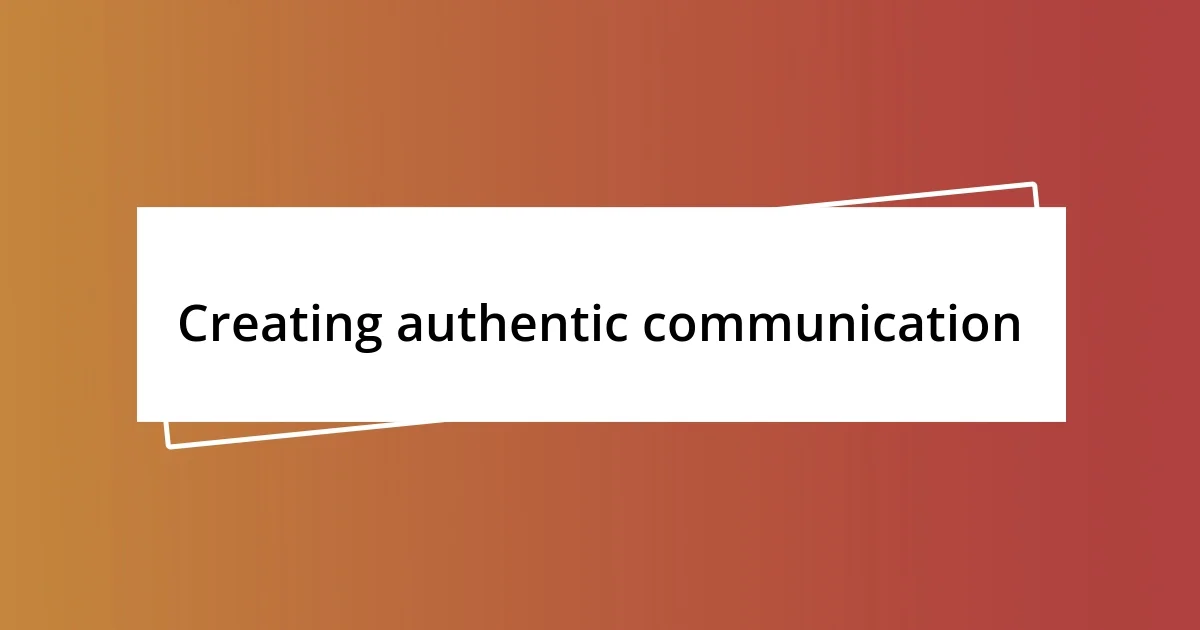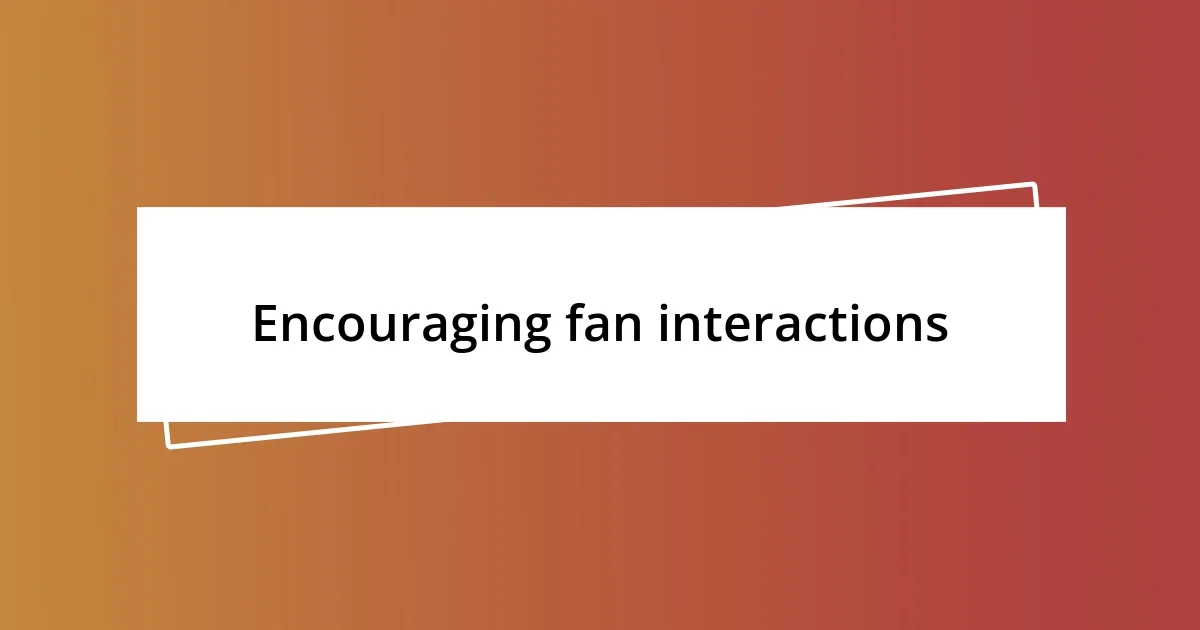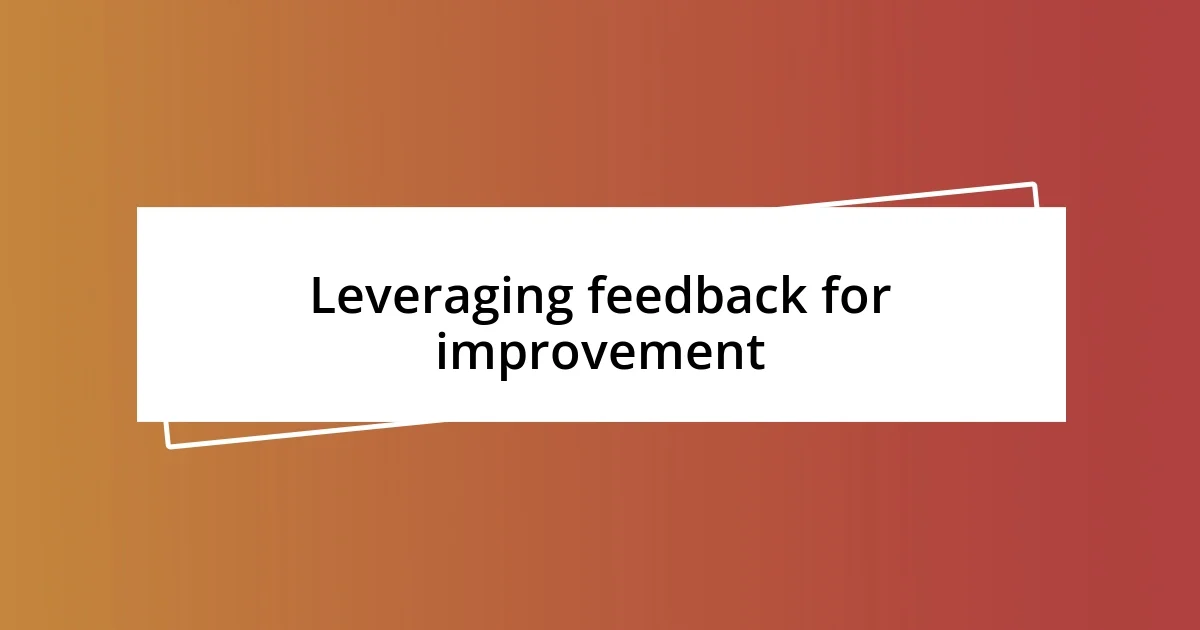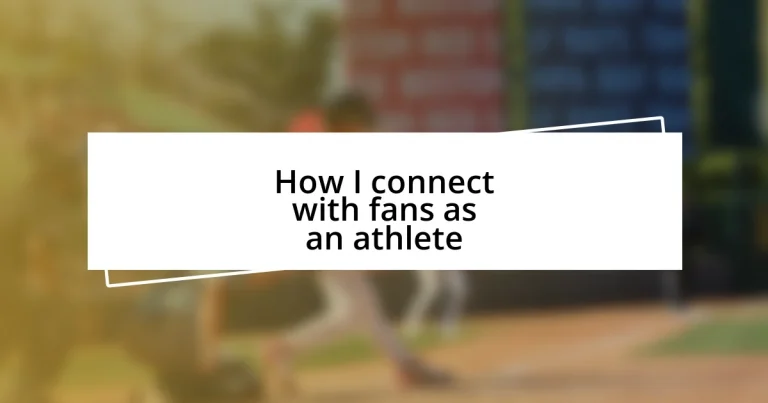Key takeaways:
- Building authentic relationships with fans through personal interactions, transparency, and genuine communication strengthens the connection between athletes and supporters.
- Utilizing social media effectively by sharing behind-the-scenes insights, engaging with fans, and fostering a sense of community can enhance fan involvement and make them feel part of the journey.
- Encouraging fan interactions and leveraging their feedback not only supports athletes’ growth but also creates a collaborative environment that enriches the overall fan experience.

Understanding fan connection strategies
Connecting with fans is about more than just a shared love for the sport; it’s about creating a relationship built on trust and mutual respect. I remember during one of my off-season events, I took the time to personally respond to fans’ messages on social media. The outpouring of gratitude I received showed me that even simple interactions can leave a lasting impact.
Reflecting on my journey, I realize that attending community events really helps solidify that bond. There’s something special about standing side by side with fans at a local charity run, sharing laughs, and hearing their stories. It’s these moments that remind me that behind every fan, there’s a unique individual whose life is intertwined with my journey. How often do we, as athletes, take the time to realize the power of those interactions?
Moreover, I find that transparency plays a crucial role in fan connection strategies. I’ve shared my struggles and setbacks in interviews, not just my successes. This openness invites fans to relate on a deeper level, allowing them to see me as more than just an athlete—I’m a human with dreams and challenges too. Isn’t it fascinating how vulnerability can actually strengthen bonds? It’s a reminder that our journeys are often more similar than different, which allows us to connect in meaningful ways.

Utilizing social media effectively
Utilizing social media effectively can transform the way athletes engage with their fans. I often see social media as a bridge, connecting me to people worldwide who share my passion for the sport. For instance, after posting a video of my training regimen, I was taken aback by the flood of questions and encouragement I received. It reinforced my belief that fans appreciate behind-the-scenes insights. They want to feel like they’re part of the journey, not just passive spectators.
Here are some strategies that have worked for me:
- Authenticity: Share genuine moments, whether they’re achievements or struggles. People respond to realness.
- Engagement: I make it a point to reply to comments and DMs; it shows fans that I care about their thoughts.
- Visual Storytelling: Using photos and videos to share my experiences adds depth and relatability to my posts.
- Regular Updates: Keeping fans posted about upcoming events or training routines helps maintain that connection.
- Collaborative Content: Partnering with fans on social media challenges or shout-outs creates a two-way dialogue and fosters community.
Every interaction reinforces the connection and reminds me that we’re all in it together. It’s amazing how much depth these virtual exchanges can add to my relationship with fans, making it feel more personal and meaningful.

Engaging through live events
Engaging with fans through live events has always been one of the most rewarding aspects of being an athlete. I recall a local meet-and-greet event where I unexpectedly found myself in a long conversation with a young fan. This young person shared how my journey inspired them to overcome their own hurdles. That interaction taught me how powerful it is to share those moments face-to-face. It’s all about creating memories together that transcend the sport itself.
There’s something electric about the atmosphere at live events. I remember participating in a charity basketball game where the stands were packed with fans. As I played, I noticed people in the crowd cheering, holding up signs, and even wearing my jersey. I think it’s these shared experiences that can forge an unbreakable bond. Attending events such as these allows me to not only showcase my passion but also to hear firsthand what fans feel and think, which adds immense value to my career. Isn’t it incredible how those cheers can lift you high, even during tough moments?
While live events are fantastic for engagement, they also give me a chance to give back. I’ve taken part in sports clinics for children, where I teach skills and share life lessons. Seeing those eager faces light up when they learn something new is profound. It reinforces my belief that I’m not just an athlete; I’m a mentor and role model. Such opportunities remind me of the ripple effect we can create—one meaningful encounter at a time.
| Type of Engagement | Example |
|---|---|
| Meet-and-greet | Sharing personal stories and struggles with fans directly |
| Competitive events | Real-time feedback and support from cheering fans |
| Coaching clinics | Teaching skills and building lasting memories with children |

Building a personal brand
Building a personal brand as an athlete is about showcasing not just my skills, but who I am off the field—my values, passions, and personality. For instance, I took the leap to share my journey with mental health in a candid post, and the heartfelt messages I received showed me how many people resonate with that struggle. Have you ever shared something deep with your fans? The connections formed in those moments feel truly sacred and strengthen my brand in ways that stats or scores never could.
I’ve learned that consistency matters just as much as authenticity when it comes to personal branding. Posting regularly keeps fans engaged and excited about what’s next. Once, I experimented with a weekly Q&A where fans could ask me anything. The questions ranged from my workout routines to my favorite books, and it felt like I was inviting them into my world. This openness fosters a sense of community; it reminds me that we’re building something together, and that’s what my brand is all about.
What can sometimes surprise me is how sharing everyday moments—like my favorite home-cooked meals or a random day off—can resonate deeply with fans. I remember posting a simple picture of me cooking with my family, and the responses flooded in. People appreciated that glimpse into my life beyond the games. It’s a reminder that our personal stories hold power. Each story shared adds a layer to my brand, creating a more textured narrative that fans can relate to, ultimately ensuring they feel part of my journey.

Creating authentic communication
Communication with fans should feel genuine and personal, not scripted or distant. I remember chatting with a group of fans after a game, where one guy passionately expressed how much my comeback from injury meant to him. In that moment, I realized that my journey was more than just my own; it was intertwined with their stories, too. How often do we forget the impact our words and actions can have?
I’ve found that speaking from the heart resonates deeply. For instance, I once shared a heartfelt post about the struggles I faced during my early career. The response was overwhelming; fans opened up about their own challenges, creating a shared space of vulnerability. It made me reflect on how our shared experiences can bridge gaps and build a connection that feels more like a friendship than a fan-hero dynamic. Isn’t it amazing how honesty can spark such meaningful dialogues?
Interaction can be even more powerful when it’s direct. During a recent live-streamed Q&A session, a fan asked me about the hardest lesson I learned in my career. I took a moment to reflect and shared my story about dealing with pressure and expectations. It was incredible to see that moment turn into a conversation—others chimed in with their own lessons, creating a supportive community. This exchange reminded me that authentic communication goes both ways; it’s not just about me sharing my story, but also nurturing a space where fans feel comfortable sharing theirs.

Encouraging fan interactions
Encouraging fan interactions goes beyond just responding to comments; it’s about creating opportunities for real connections. I once set up a meet-and-greet after a game, and the excitement in the air was palpable. Seeing fans’ faces light up when they had the chance to talk with me face-to-face reminded me of how meaningful these interactions can be. Have you ever experienced that electric moment when someone feels seen and heard? It’s both humbling and rewarding.
Social media platforms are a goldmine for fostering engagement. I introduced a challenge where fans could share their own workout videos using a specific hashtag related to my training regimen. The creativity and enthusiasm that flowed in were inspiring! Watching fan videos pop up on my feed felt like we were working toward a common goal, almost as if we were training together. This kind of involvement not only strengthens our bond, but it also creates a sense of belonging among fans—collaboration fuels connection!
Sometimes, I like to sprinkle in a little fun while encouraging fan interaction. For example, I once hosted a giveaway for signed merchandise, asking fans to share their personal game-day traditions. The stories poured in—everything from family rituals to quirky superstitions. I read each one, and it felt like I was gaining insight into their lives, too. It made me wonder: how often do we take the time to celebrate the unique customs of our supporters? Recognizing and embracing these personal connections transforms fan interactions into authentic relationships that enrich my journey as an athlete.

Leveraging feedback for improvement
Leveraging feedback is crucial for my growth as an athlete, yet it’s one of those elements that often goes unnoticed. After a tough game, I remember reading the comments on social media where fans shared their thoughts about my performance. Some were critical, while others offered encouragement. I found those raw insights incredibly valuable; they provided perspectives that I might not have considered otherwise. How often do we look at feedback purely as criticism instead of recognizing it as a chance for growth?
The times I’ve actively sought feedback, whether directly or through polls on my platforms, have significantly shaped my training. I once asked fans which aspect of my game they thought needed improvement. The response was eye-opening; many pointed out details about my footwork that I hadn’t prioritized in my training. Making those adjustments elevated my performance. Have you thought about how outside opinions can illuminate blind spots in your own journey?
Taking feedback a step further, I like to incorporate it into my routine. After a particularly challenging match, I curated a series of workouts based on fan suggestions, emphasizing strategies they thought I should adopt more on the field. I received messages from fans expressing their joy for being involved in my training process. It reminded me that their engagement isn’t just impactful; it creates a shared ownership of my journey. Isn’t it fascinating how collaboration can foster a deeper community among fans and athletes alike?














